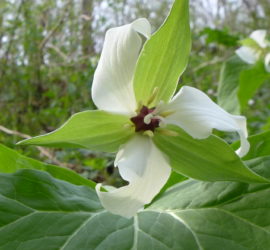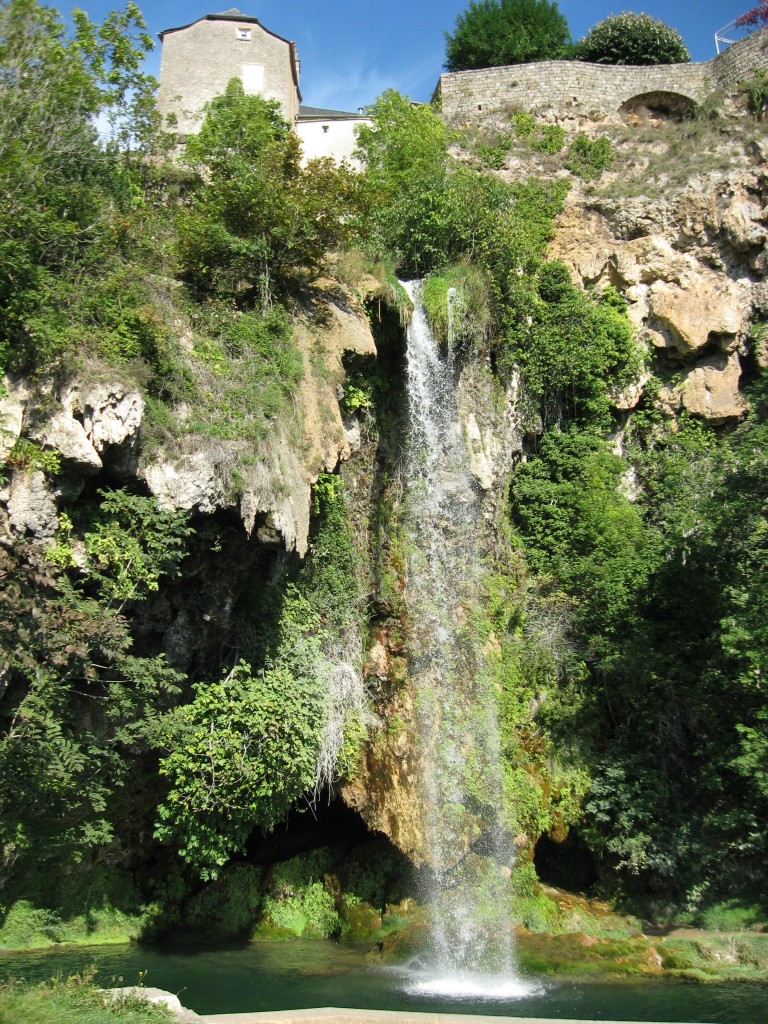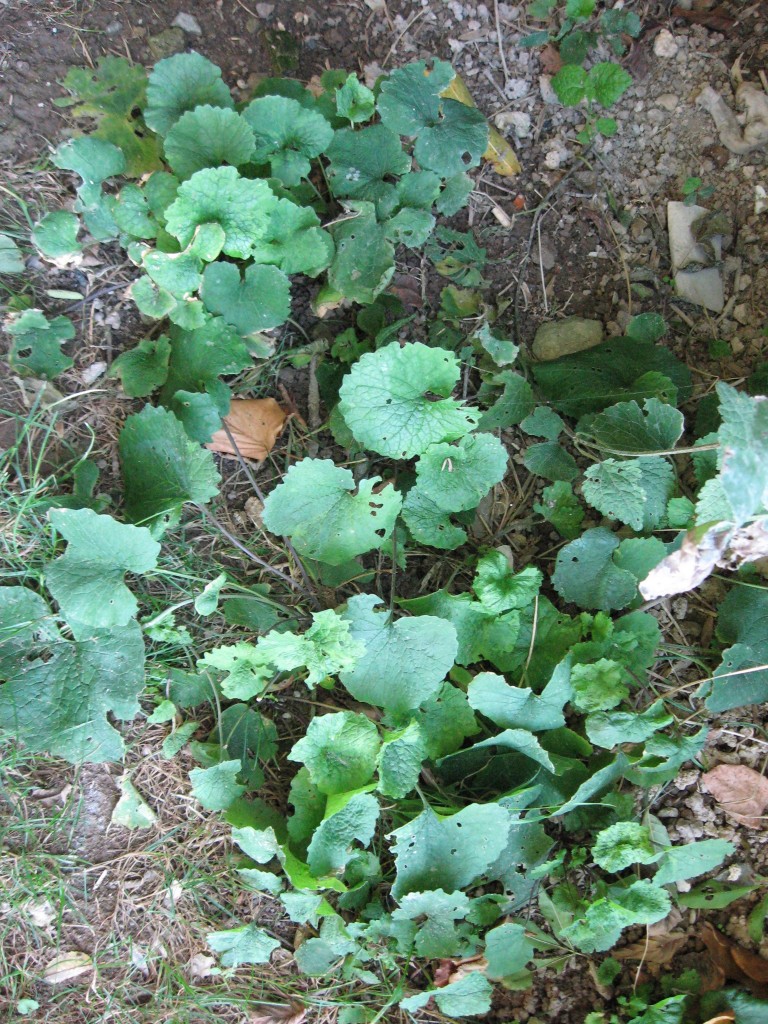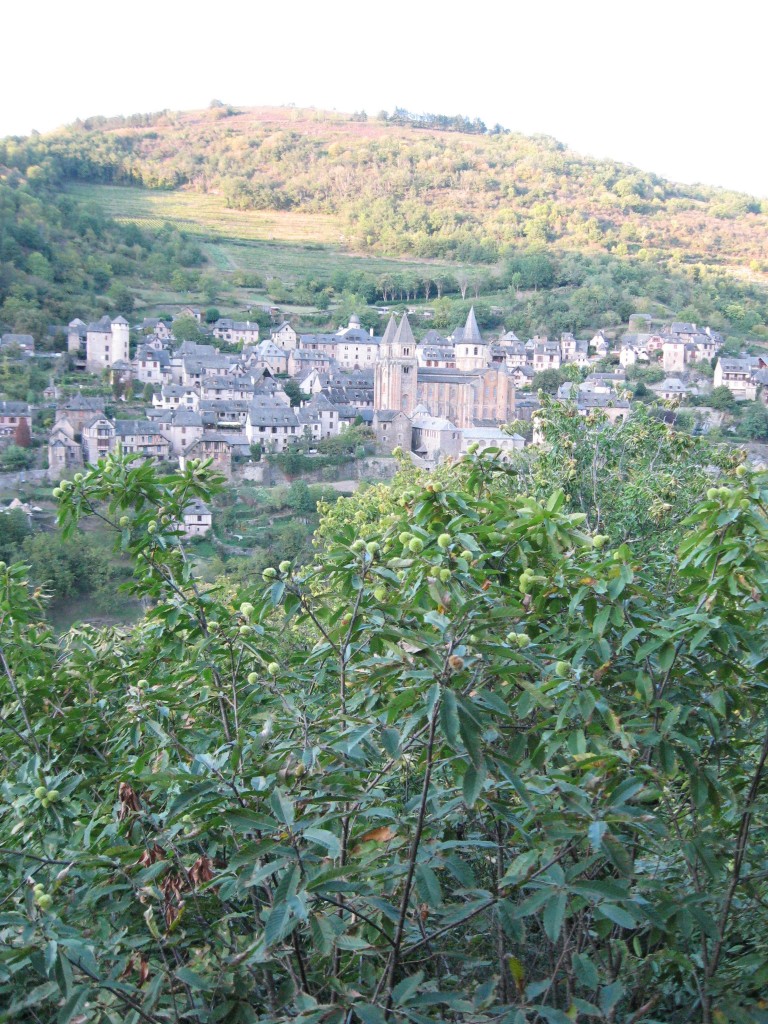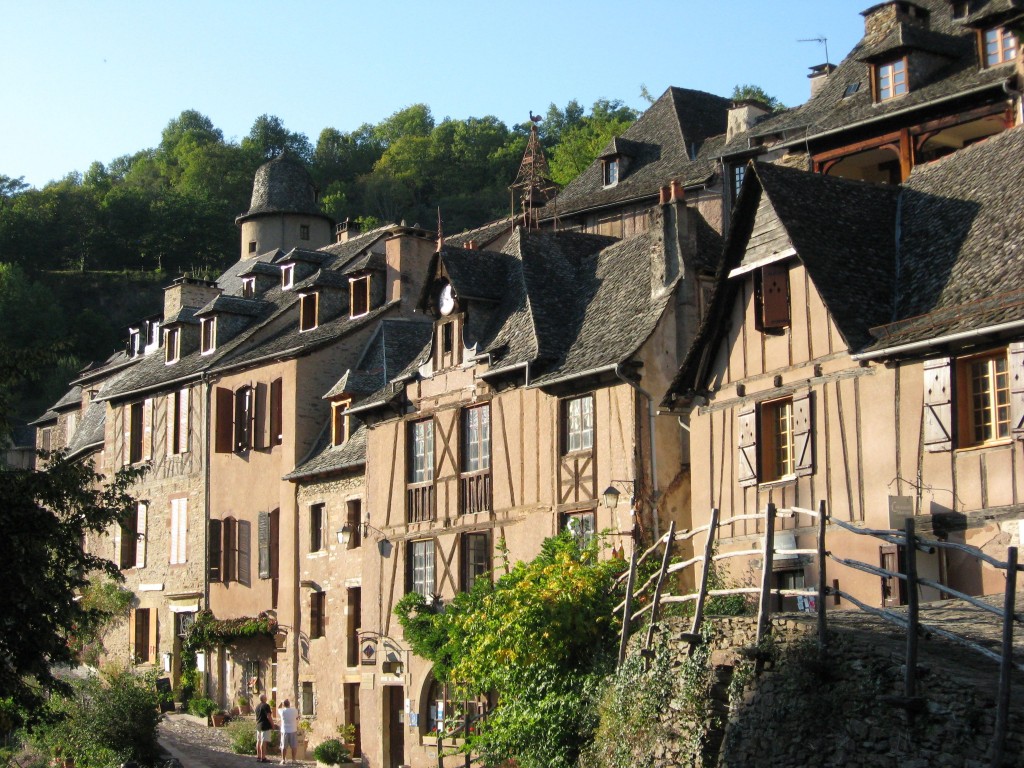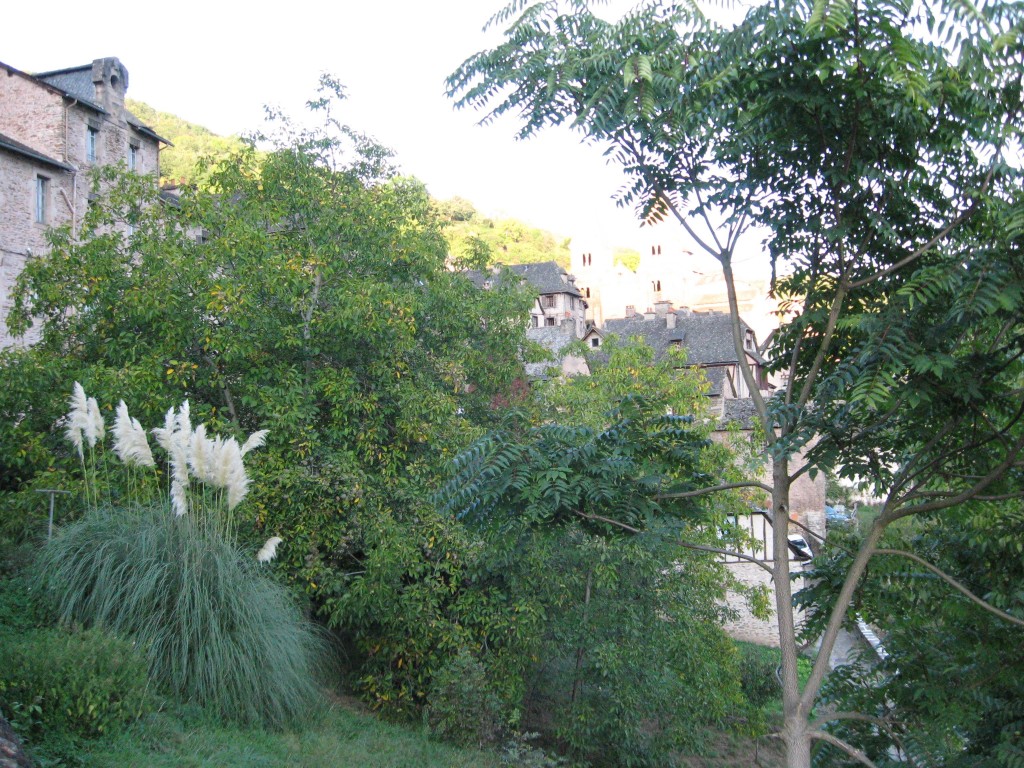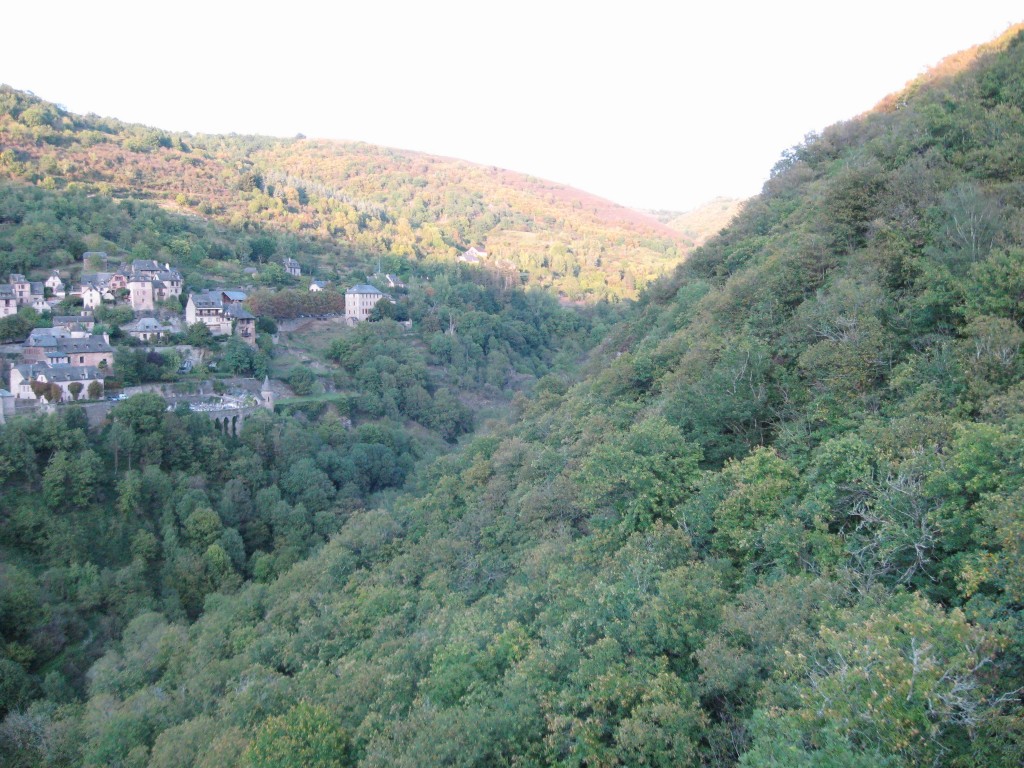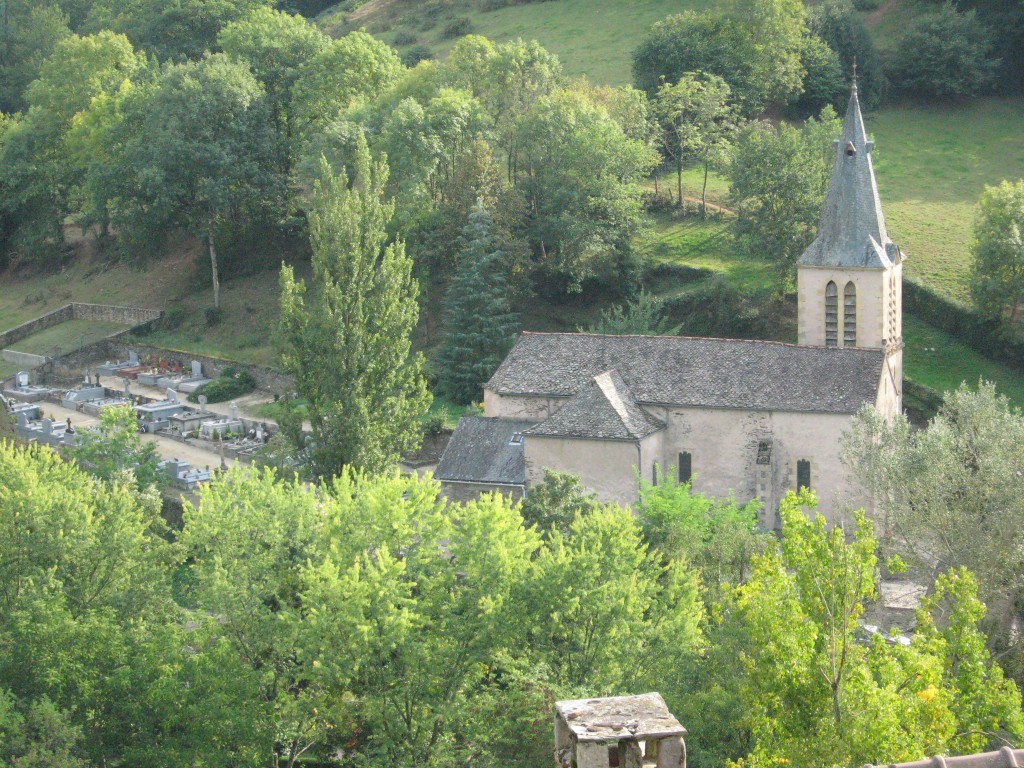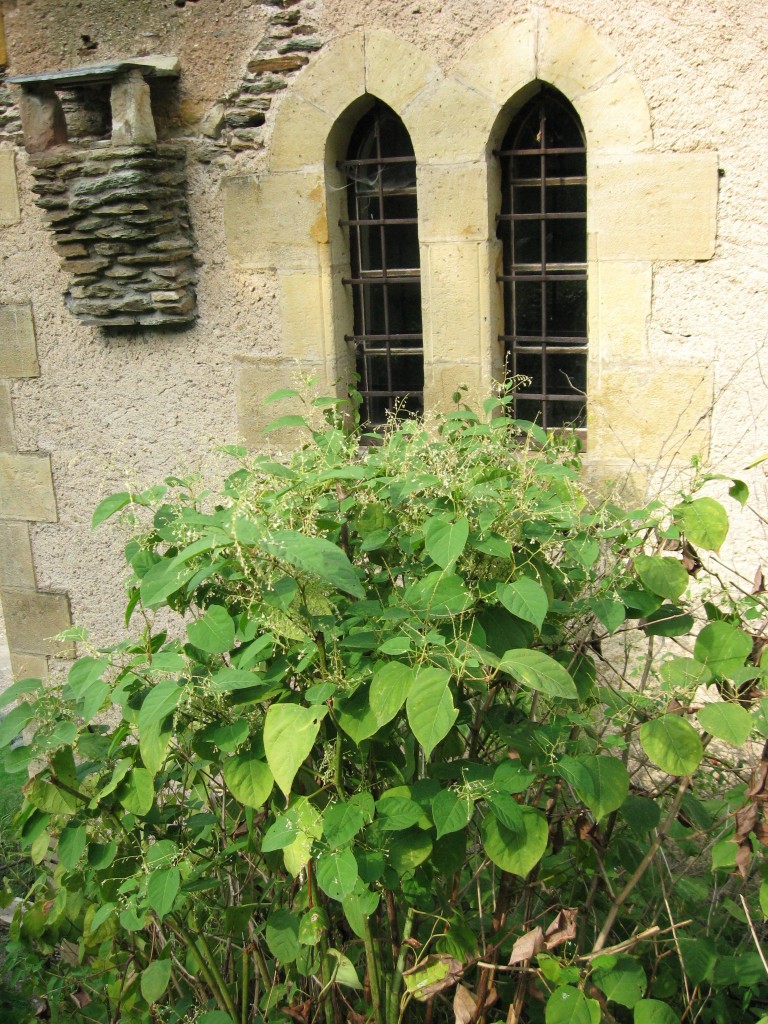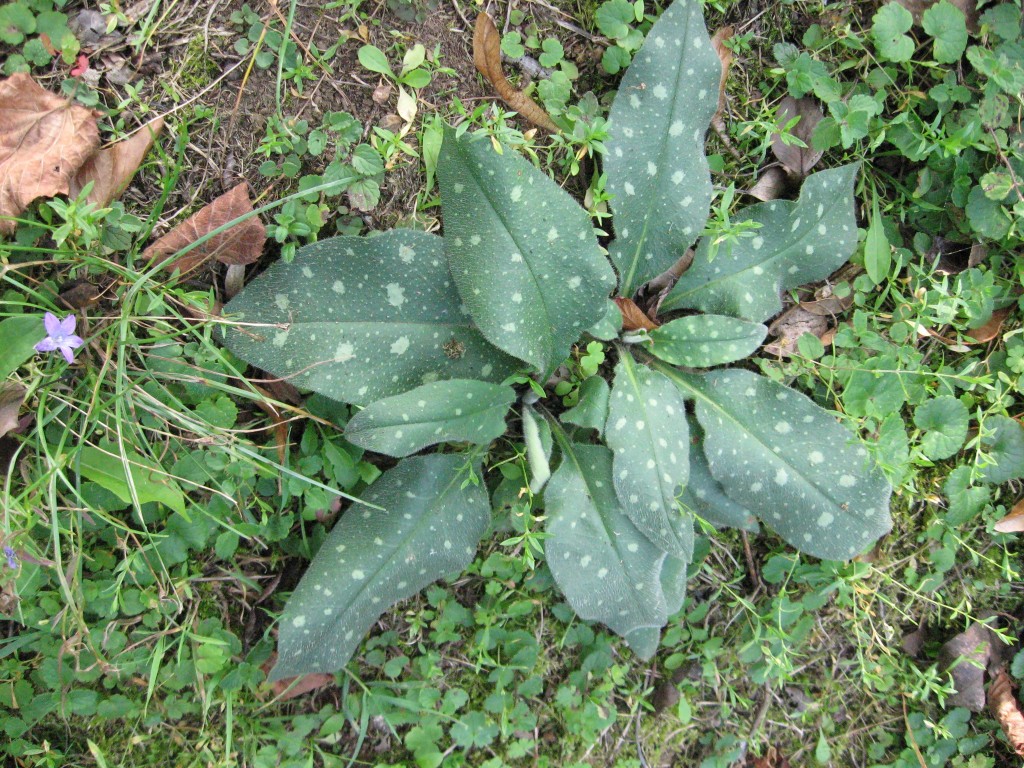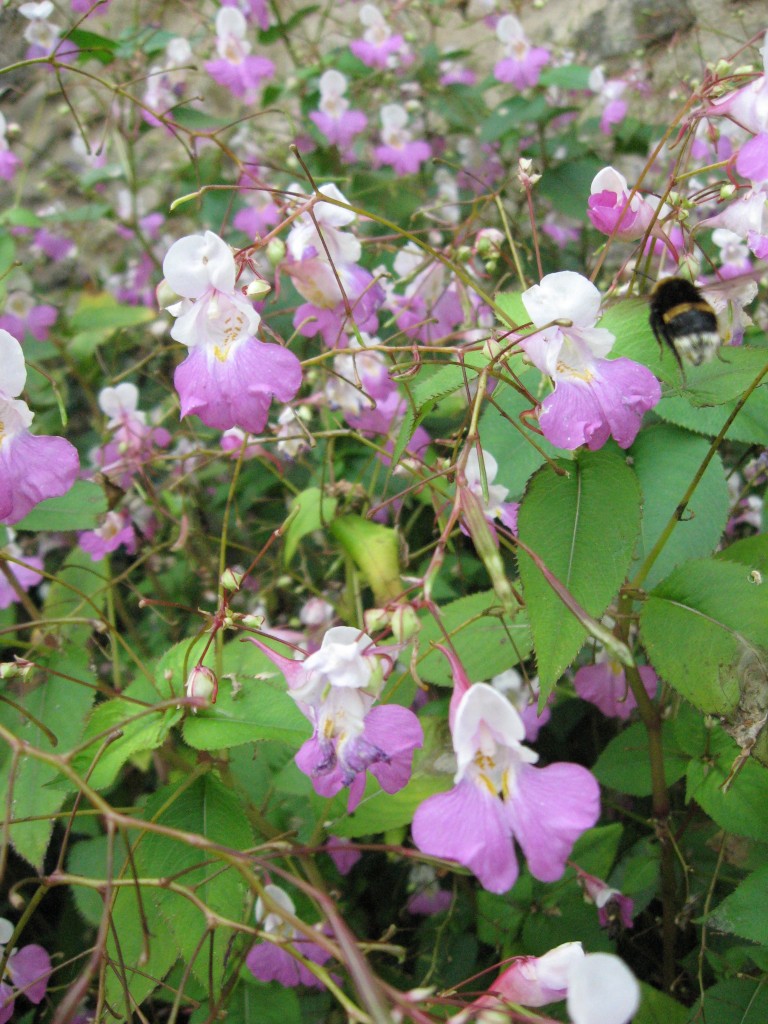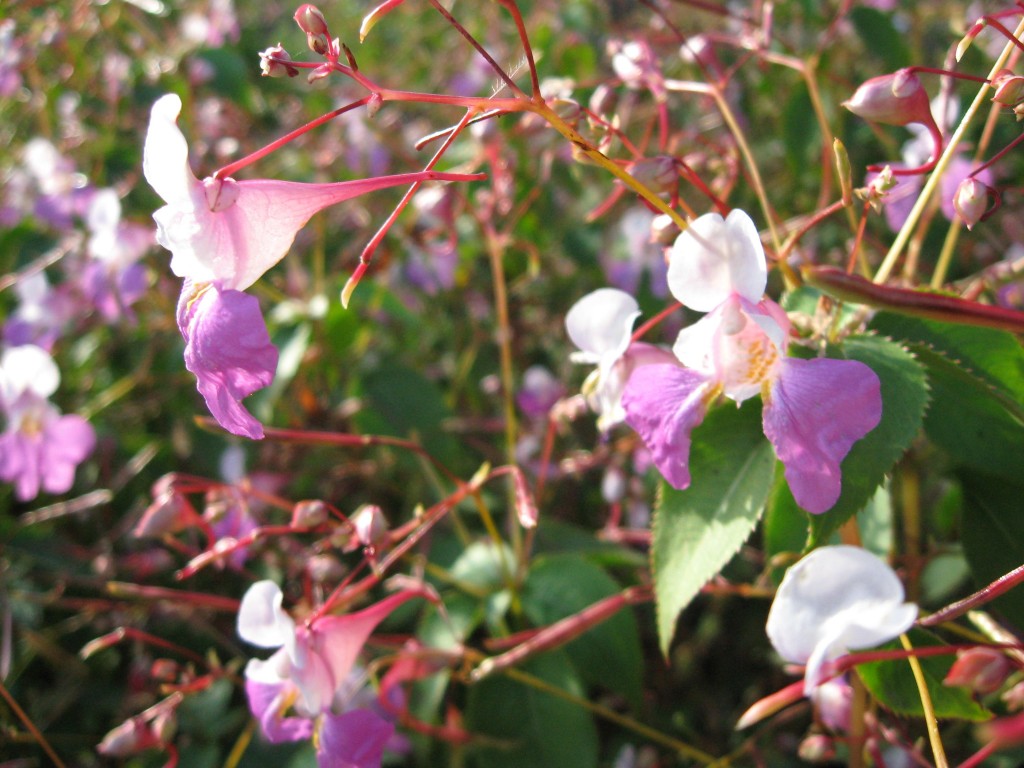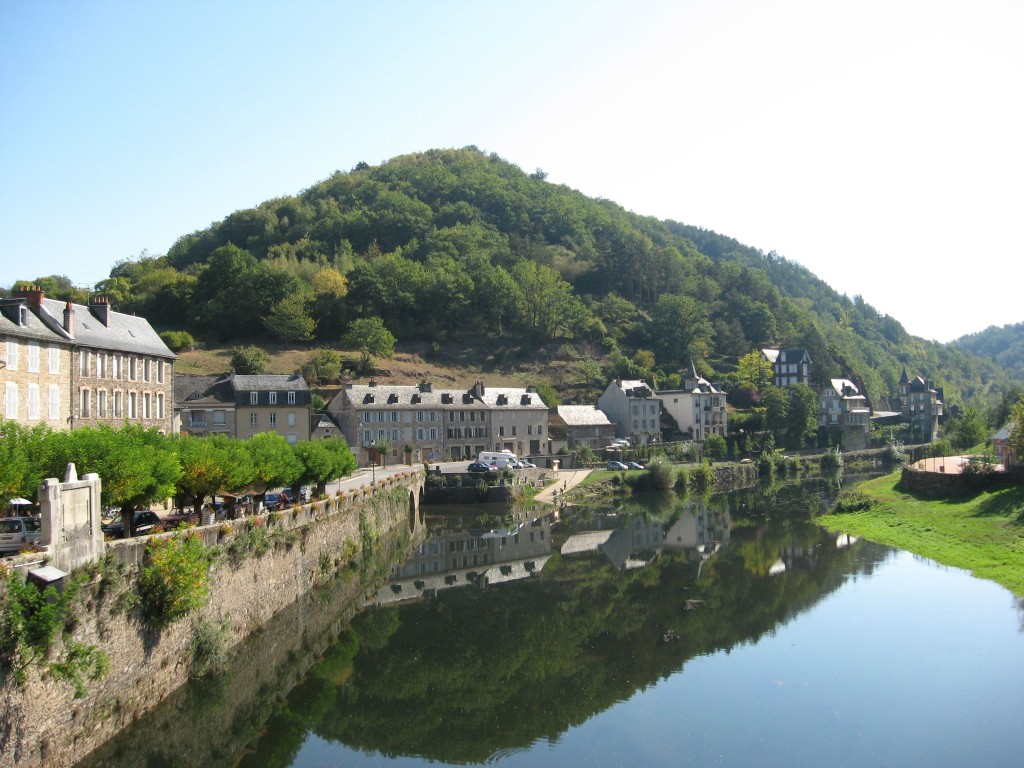American expats lounging about in Parisian gardens. They live rent-free just because they are unique and exotic Americans. The Parisians lust for them and they show off their prized Americans every chance they can. The Americans feel perfectly content and justified in their exalted status here in France. They are not treated as well in America. They are often brushed to the side in favor of some Asian ornamental plant.
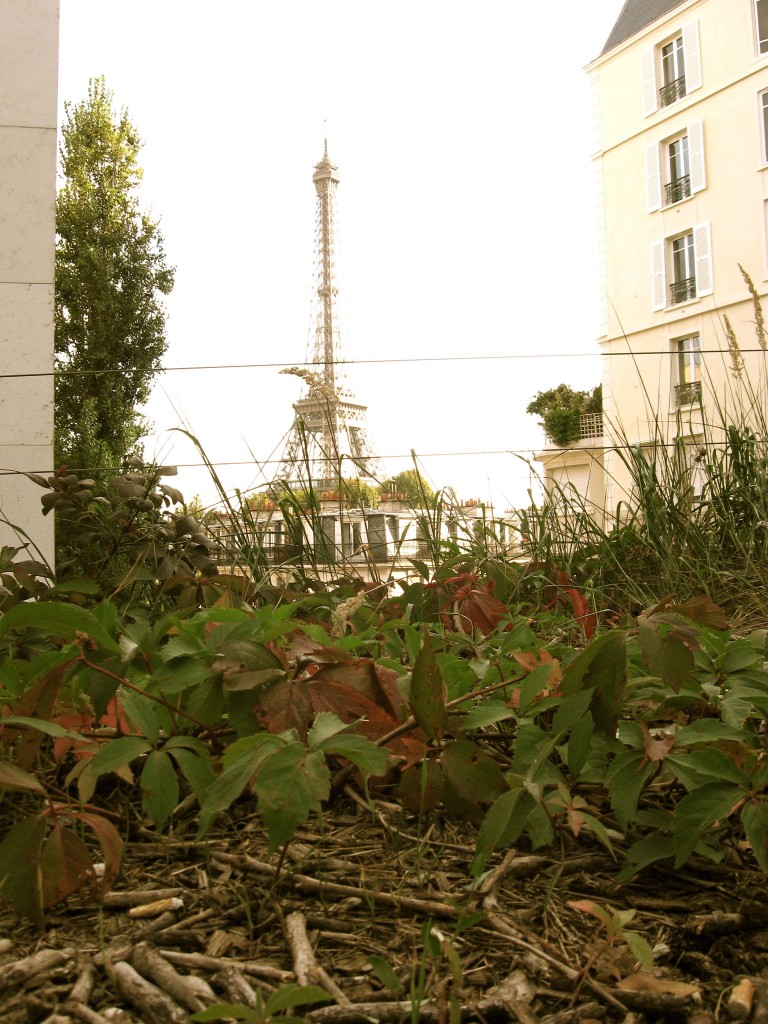
Parthenocissus quinquefoilia
This American vine has got the best apartment in town, with the best view. All because it has a beautiful fall color, a deep crimson red, and exotic blue berries on a red stem. It is a great ground cover as well, not to mention its attractive leaves which are highly ornamental. This is a loved American vine in Paris.
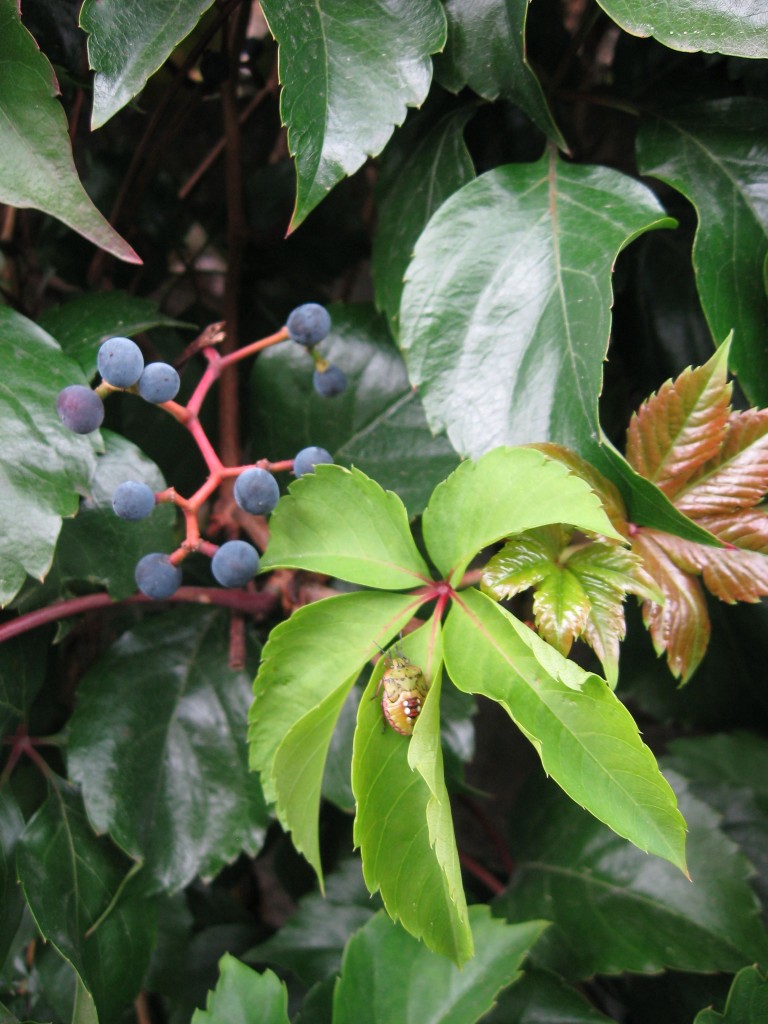
The above pictured Virginia creeper is often brushed aside while the Parisian native vine English Ivy, Hedera helix, gets the hot real estate in Philadelphia.
As the saying goes, the grass is always greener on the other side.

Liriodendron tulipifera
The Parisians love this fast growing very straight and tall American tree with orange and green tulip shaped and sized flowers. It is easy to see from the French perspective that if well-placed, our Tulip Poplar could be an excellent specimen tree. In this location, there are no buildings that will be damaged from the branches that will inevitably break off in the future.
It was so much fun to see our Tulip Poplar being celebrated in Paris.
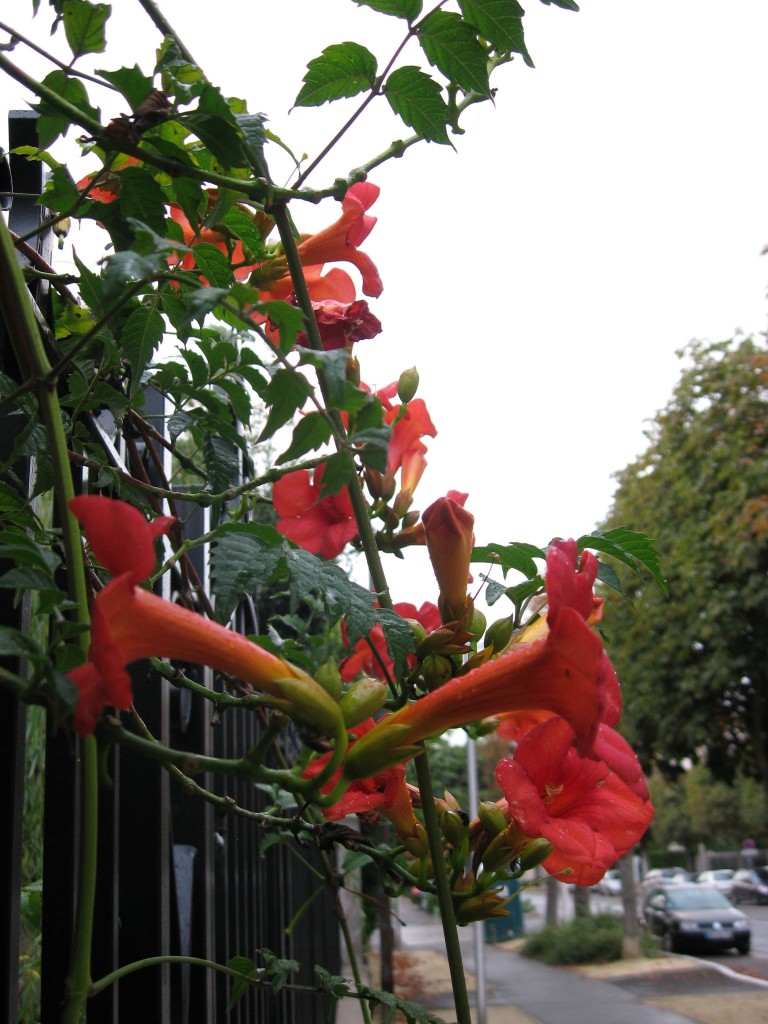
Campsis radicans
This vine is so common throughout Paris and the south of France that it could be misinterpreted as a native very easily. The Campsis radicans vine speaks French with a perfect accent for every region of the country it is grown. It has been introduced and cultivated in France since the 1700s. There are even cultivars of this vine that were originated in Europe! It is loved in France and it loves France! In the south of France, there are old vines with stems six inches in diameter!
A botanical Francophile to be sure. We did not see any evidence of it escaping cultivation or becoming invasive either. (but then again, who knows what will happen in the bigger picture).
With all of the fanfare and the hype around this plant in France, we cannot ignore the bright red tubular shape of the flower, designed in the process of evolution for the pollinating Hummingbird, a bird that is found only in North America. This is a botanical feature of the plant that is a dead give-away of its North American nativity.
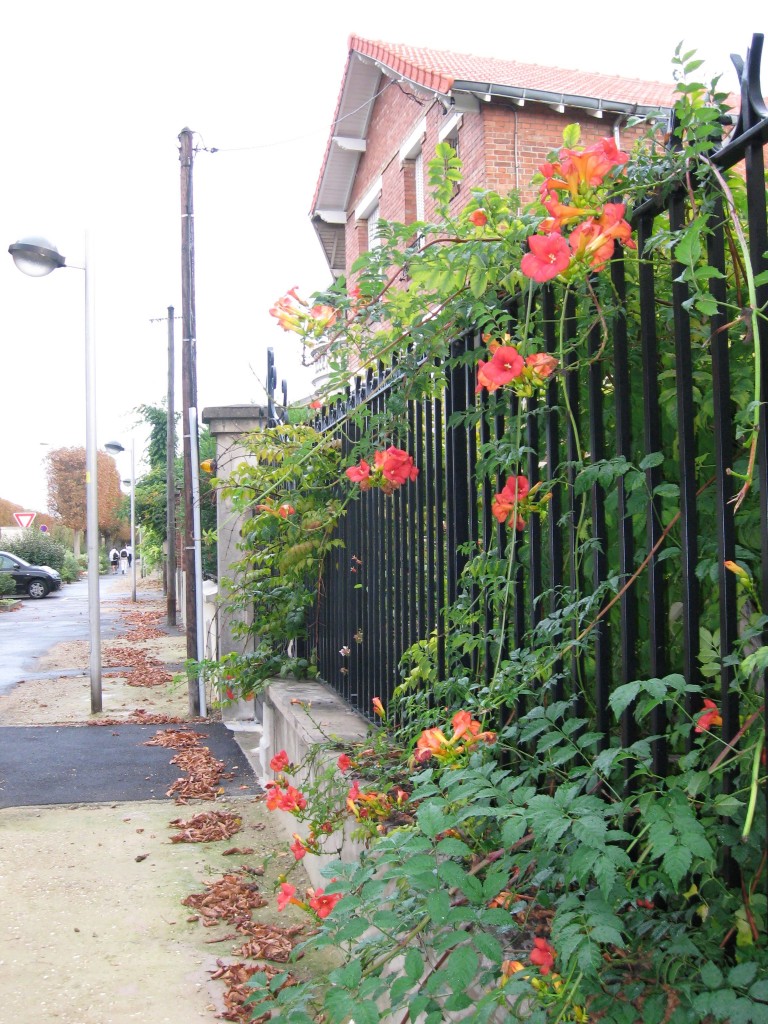
As a garden ornamental, the Americans are not very enthusiastic about the Trumpet vine. ( if we are wrong on this in a regional context, please speak up, we want to know the truth). The fact that the French love this plant is somewhat endearing, however we remain skeptical because it is not a native plant to this part of the world. It could still become invasive.
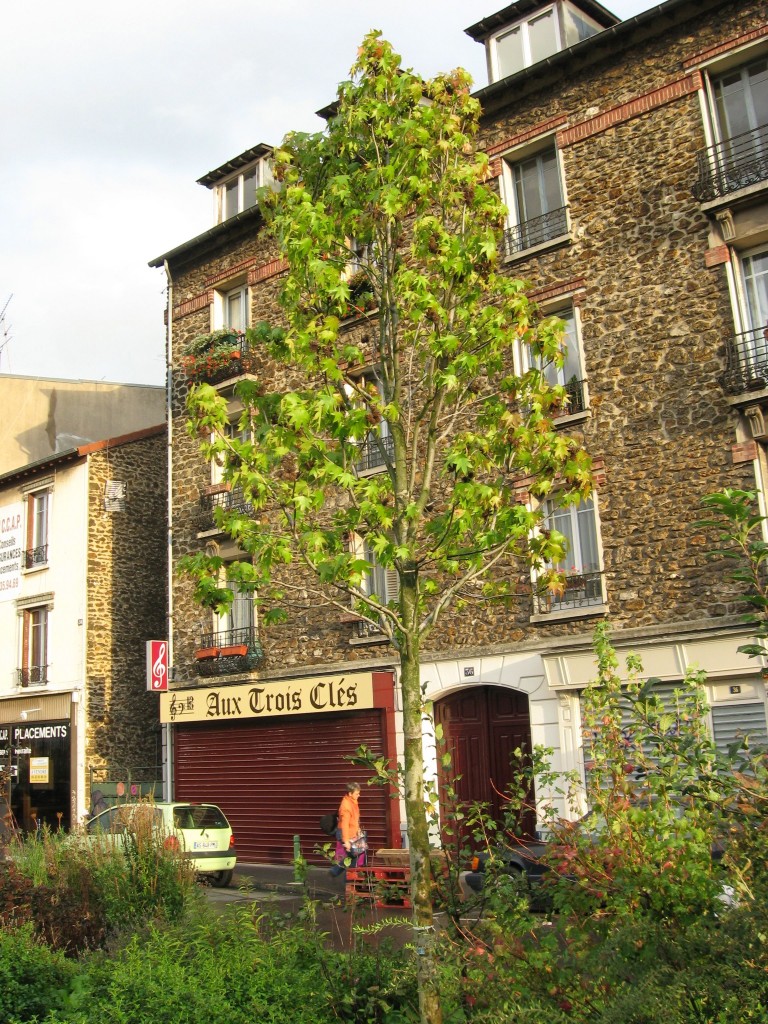
The above picture is the Sweetgum. here it is being proudly displayed as an ornamental in the distinguished Paris suburb of Le Raincy. We ran across this tree in our adventures. We had taken the Parisian commuter train called the RER to the train station of Le Raincy, a town we had been to many times, the home of Isabelle’s brother. However we had never arrived in Le Raincy from the RER before, and we immediately were lost. We were invited for dinner and we wanted to be on time so there would be no waiting or associated anxieties. We get off the train at the station and we find ourselves in a part of town unfamiliar to us, but full of great architecture.
But now we were even more lost. A kind 70+ year longtime resident of Le Raincy directed us in the right direction and even walked with us for 10 blocks until she tired. She sent us toward our destination in this magnificent suburb just east of Paris. We felt so welcome.
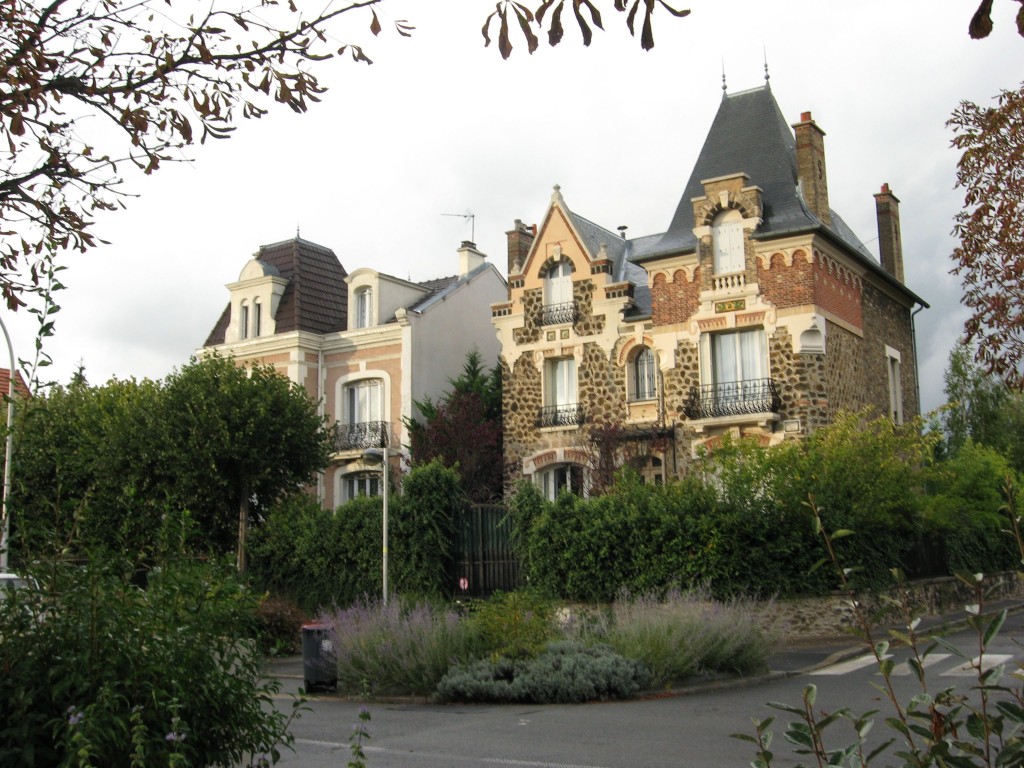
We were still lost and it was getting late. Dinner was in just five minutes! We viewed and photographed the Campsis radicans, the American trumpet vine along the way, and we stopped at a Jewish grocery and bought a bottle of kosher Bordeaux.
Now, we were still lost and completely on our own to find the right street. Isabelle saw the American Sweetgum, liquidamber stryaciflua, in the planted -up median between the tram and the street. (Now we were in familiar territory, because we know this tram line quite well).
If Sean sees this we will be sidetracked and even more late. He will want to take pictures, inspect the leaves, the bark, the fruits- I know this tree just from a glance.
It was getting dark and we were now running late for dinner and still officially lost, despite finding our familiar tram line. However, the American Sweetgum was planted all along the roadway, between the tram tracks and the automobile road.
Sean finally noticed the American sweetgum and immediately stopped in his tracks.
Isabelle! Stop!
What?
Pointing emphatically. Isnt this the Liqiuidamber stryaciflua? The Sweetgum?
Yes, I believe it is. Said Isabelle.
The picture was taken and the fruit was observed in haste and within minutes we found ourselves in familiar territory, finding the street Isabelle’s brother lives on. Only five minutes late! Just long enough to identify an American plant in France.
So there we have it, The French love our Liqiudamber stryaciflua, the Sweetgum.
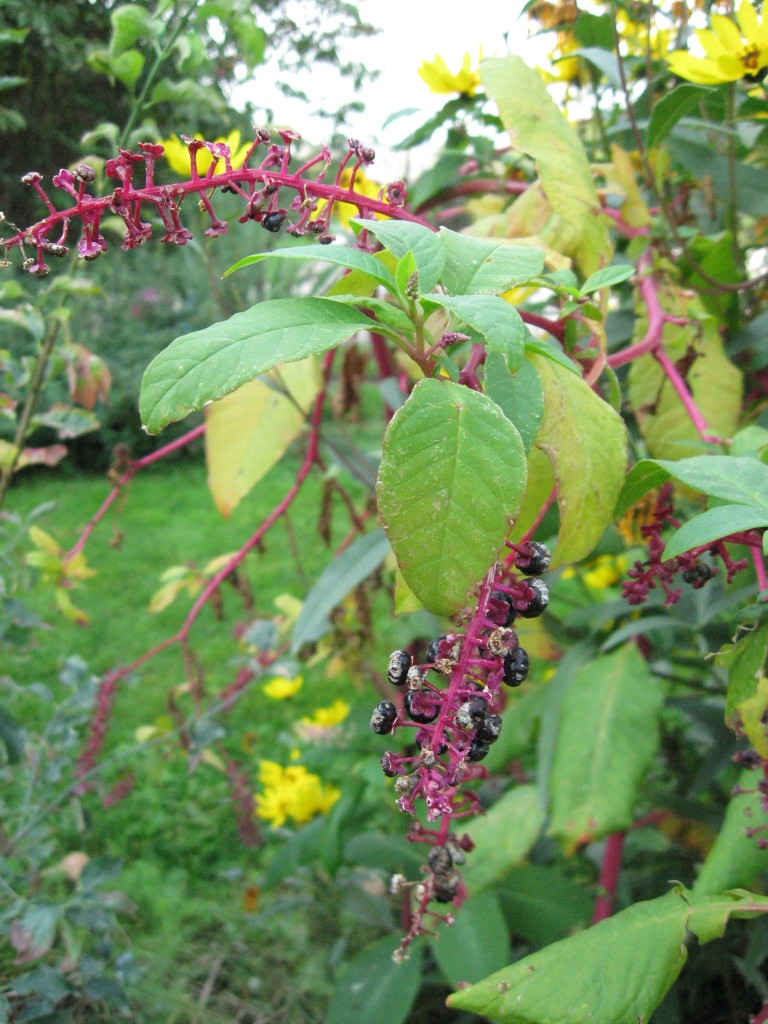
Phytolacca Americana
The Pokeweed is as American as Ben Franklin, our most famous American in Paris. It has been introduced in Europe for so long that it is found throughout the continent.
The dark juice from its berries has be reportedly used as ink to write drafts of the Declaration of Independence. Ben Franklin was a printer and must have known about this plant.
Pokeweed is found throughout France, along the railroad tracks, in gardens as weeds and in cultivation.
This plant more than any other, is a living articulation of the long and detailed history between France and the United States of America.
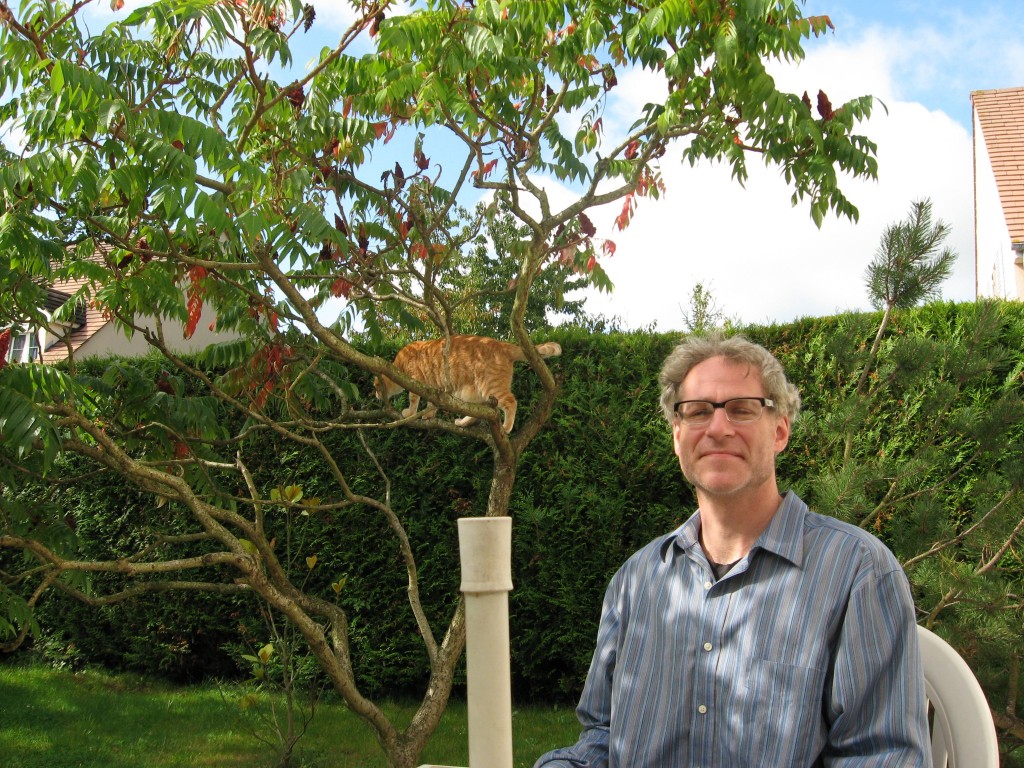
Rhus typhina
The French have fully embraced our Staghorn sumac as an ornamental. It is everywhere. This is a great large shrub that is almost completely ignored in America. It is left on the side of the road as a weed. From time to time it is found in an ornamental position in the States. In Philadelphia it has been brought into cultivation as an ornamental along the new Schuylkill River Park in Center City. It is great to ride bikes or walk along this section of the river and see the magnificent specimens of Staghorn Sumac being presented as ornamental beauties, only to cross the river at the Art Museum and see them growing as uninvited weeds along West River Drive, just a few paces away!
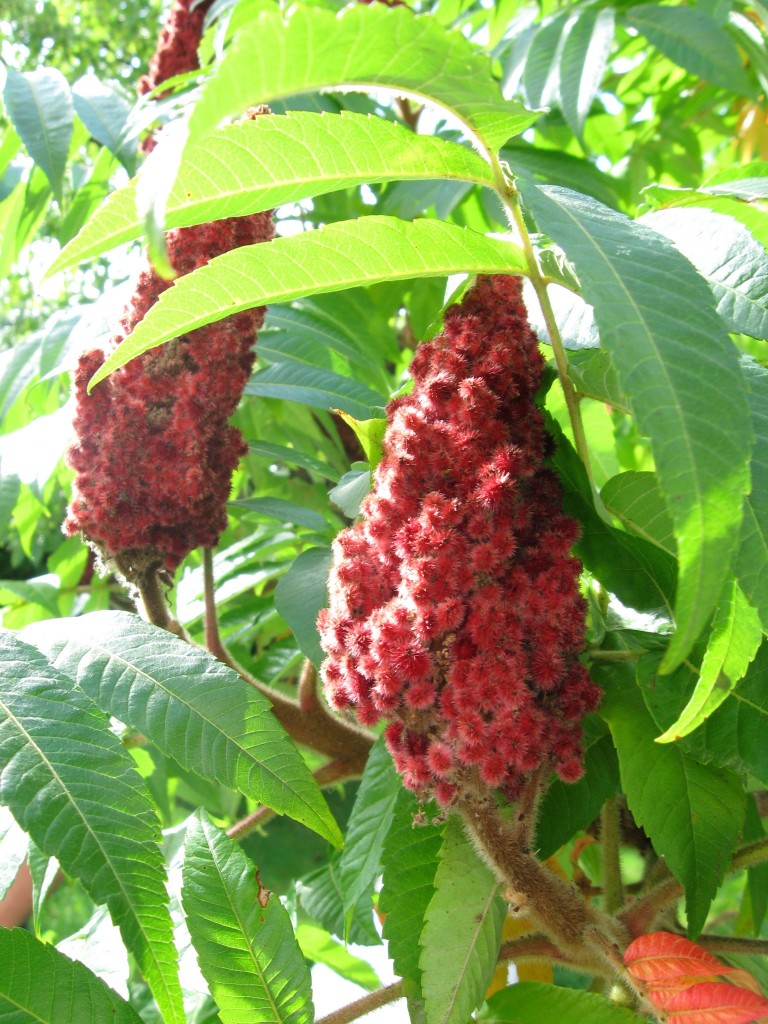
It is somewhat amusing to see plants that Americans dismiss in favor of Asian ornamentals being exalted in Europe. However it’s the same story on the other side of the pond. There was a point in time when having a unique and different plant in your yard was a sign of status, and this boosted the importation of foreign plants. This practice has been carried to such an extreme that it is almost expected to have foreign plants in your yard, so much so that fines are being exacted upon those that grow native plants!
The cultural aesthetic of landscaping is dominated by plants that may look pretty in our yards, but can become severe pests in the natural areas we live amidst, and we are seeing this pattern unravel in France .
For the most part at this time, most of the invasives in France are Asian ornamentals that have behaved for a few years and then have suddenly gone berzerk, like the Butterfly bush or the Tree- of -Heaven.
Our native plants introduced in France, in the bigger picture, are at risk of becoming the next ugly Americans.

